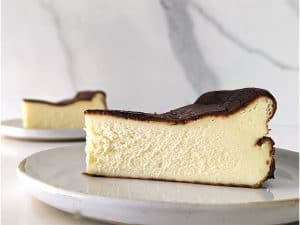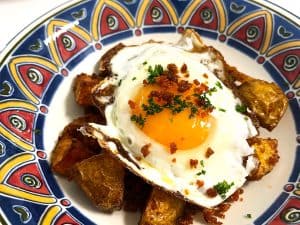There’s no meal that cannot be made even better with the addition of some Cuban plantains! They can be fried, stewed, boiled, or baked. They are delicious when they’re green, ripe, or in between. A super popular Cuban side dish, plantains are served with just about every entrée. In fact, most Cuban dishes are naked without a side of maduros (ripe fried plantains) or tostones (twice-fried green plantains).
Plantains are grown throughout South and Central America and the Caribbean, and they are a staple of many Latin and Caribbean dishes.
They can be eaten as chips, added to soups and stews, stuffed with all kinds of delicious and served as a side dish or main dish. They are super versatile!
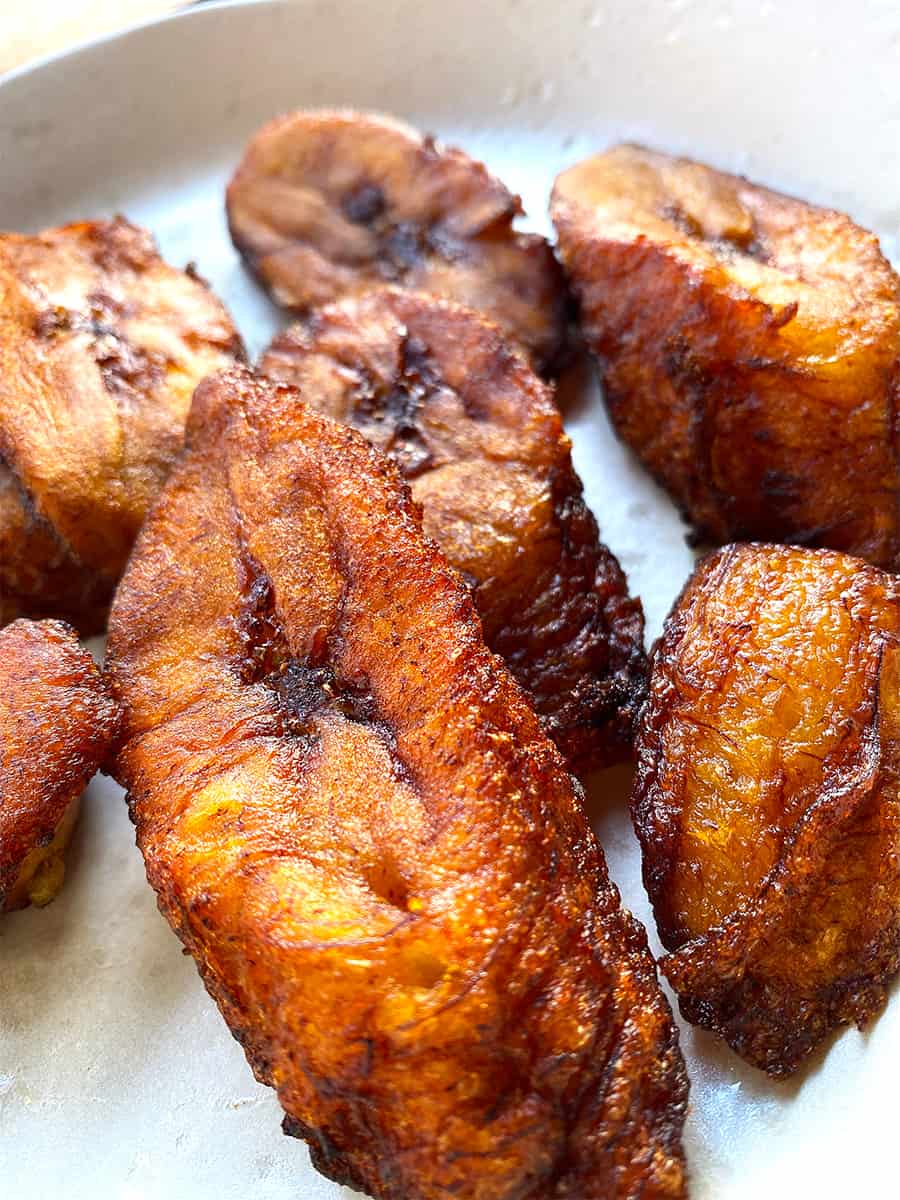
Cuban Plantains vs. Bananas
While Cuban plantains and bananas look alike, they are quite different. Plantains are technically a fruit, but they cannot be eaten raw. They are more like a potato that must be cooked before it’s edible.
Plantains are also much bigger than bananas and are often eaten with savory dishes. I didn’t know this until I did a little research for this post, but bananas are sometimes called dessert bananas. This, of course, makes sense since they are often used in desserts.
How to Cook Plantains
Cooking preparation really depends on the stage of ripeness of the plantain. But the most common cooking method is frying. Let’s look at the various stages of ripeness and the appropriate cooking method for each.

Green or Unripe
Green plantains are unripe and have very firm flesh. Here are some ways to enjoy green plantains:
Tostones: These are also known as twice-fried plantains. You first cut the plantains into one and half inch pieces that look like cylinders. Then you fry them in low heat (known as blanching) until they are tender enough to be pierced with a fork. Then you remove them from the pan and mash them into discs.
You can use a tostones masher called a tostonera affiliate link or a plate or other flat surface. I use a large 4-cup glass measuring cup to mash mine. Once mashed into discs, turn the heat to medium and fry them for two minutes to crisp them up.
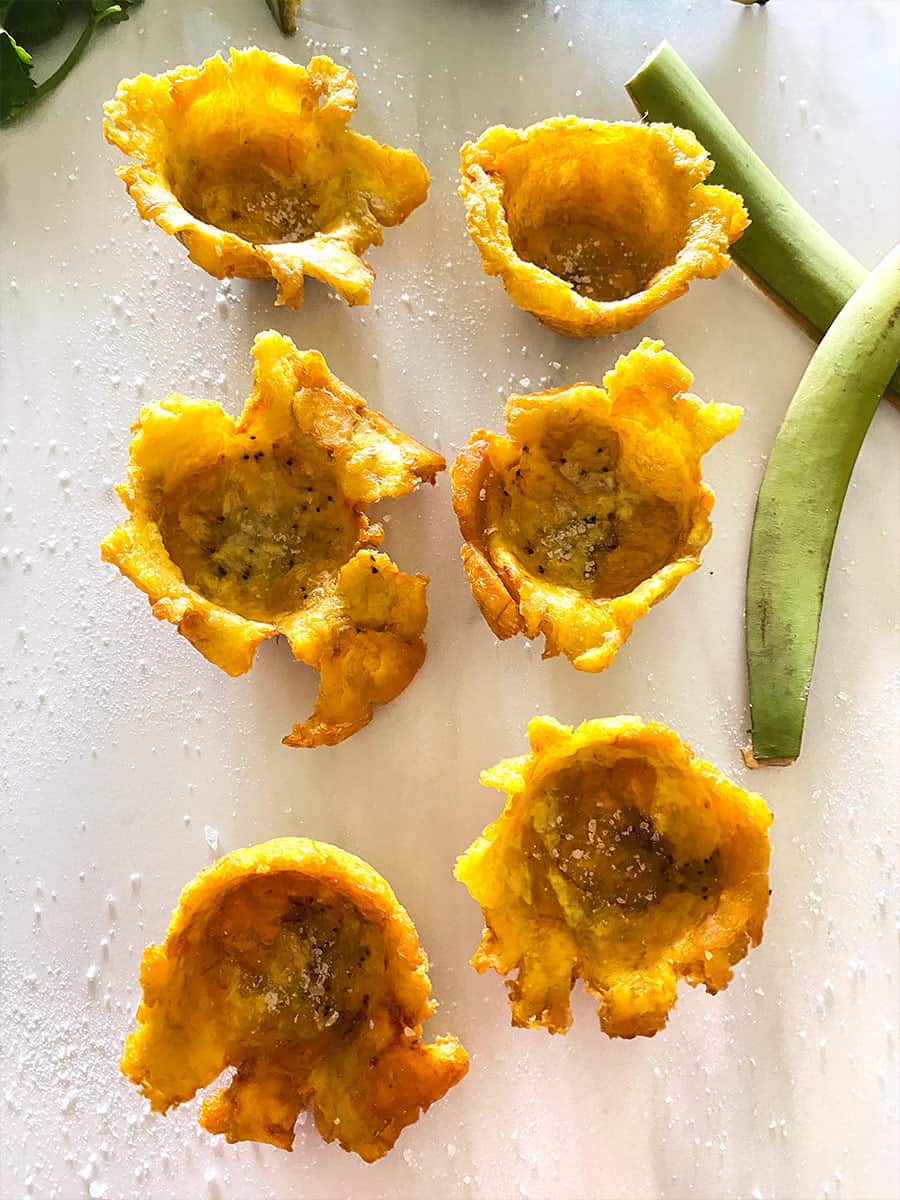
Tostones Cups: Tostones can also be shaped into cups to hold delicious savory fillings like picadillo and ceviche. To make these, you need a special stuffed plantain press affiliate link that makes the process super quick and easy.

Mariquitas: These are plantain chips and are cooked the same way you would potato chips. They are cut into thin slices with a mandolin or box cutter and then fried in hot oil until crisp. These are usually served with a dipping sauce such as cilantro-lime aioli, mojo, or chimichurri. Mariquita plantain chips are great as an appetizer or served as a side with sandwiches.
Follow my recipe on how to make tostones and mariquitas here.
Plantain Fufu: Here, plantains green and yellow (pinton) plantains are boiled then mashed with olive oil, garlic, and pork. This is usually served as a main dish. I often make a healthier version of this topped with sauteed or grilled vegetables instead of pork.
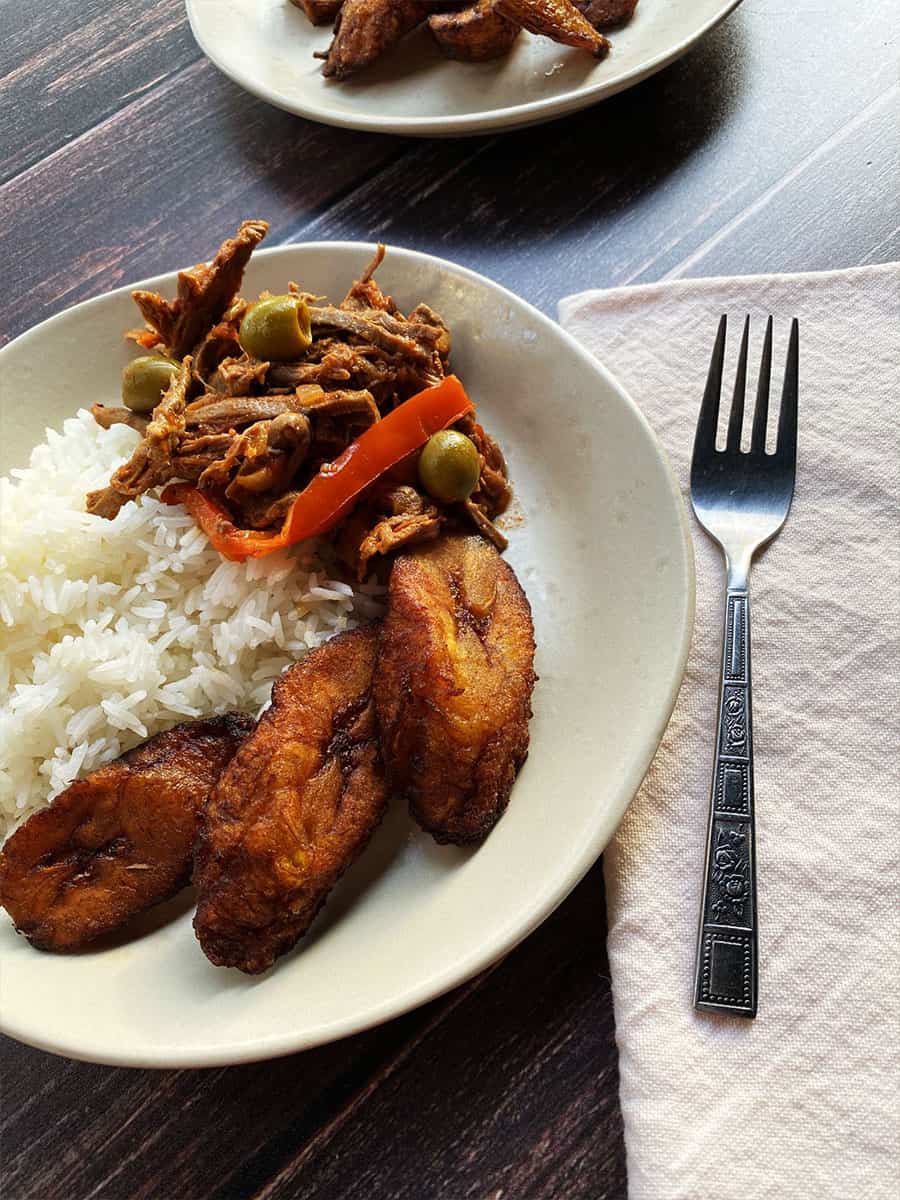
Ripe Plantains
Ripe plantains are usually cut on the diagonal into half-inch slices and fried to make maduros. These sweet fried plantains are super sweet and create a great sweet and savory combo. Without a doubt, maduros are the most popular way to eat plantains!
To make good maduros, you must know how to pick ripe plantains. The skin on the plantain should be mostly black, and the flesh should be soft. You’ll probably think these plantains are too ripe, but they’re not. They are just perfect for frying. Here are my step-by-step instructions on making maduros.
If the plantain skin is yellow, they are not ripe enough. You end up with a semi-sweet Maduro. These are also good, and it really depends on your sweet tooth.
Speaking of a sweet tooth, there’s an even sweeter way to serve ripe plantains that’s a dessert. It’s called Platano en Tentacion (which means tempting plantain). I’ve actually never eaten it this way, but my Mom often mentions it. My Big Fat Cuban Family blog has a recipe you can try.
Yellow Plantains
Known as Pinton in Spanish, yellow plantains can be fried like maduros. Most often, yellow plantains are used for soups and stews. Mami (aka Bean Train) always adds yellow plantains to her red bean soup, which is delicious. Soon I promise to post her recipe.
Pinton plantains are also boiled and mashed to make fufu, as mentioned above.
How to Peel A Plantain
There’s a trick to peeling plantains. You can’t just peel them like bananas. When they’re green, they are especially harder to peel because the skin won’t pull away as easily. The best way to peel a plantain is to cut the two ends off and then cut a few slights lengthwise on the banana. Then use a knife to get just under the skin and begin to loosen the skin from the flesh. Once you get a section to part, it becomes easier.
You just have to cut one or two slits for ripe plantains, and once you get the knife under the skin, it can part quite easily. You’ll need to make a few slits for green plantains and remove the skin in small sections so you don’t lose any flesh in the process. This quick video shows you how to do it.
Where to Buy Them
Here in Miami, plantains are available at every supermarket, including Publix. Since they’ve grown in popularity, you’ll probably find them in your local grocery store. But if you don’t, you could try Hispanic or Asian markets or the freezer section in your local store. You can also find tostones and mariquitas in the chip isle.
I hope you give plantains a try. If you do try them, drop me a comment and let me know how you liked them!

